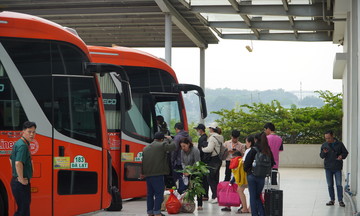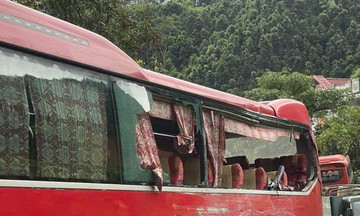In a proposal to the Ho Chi Minh City People's Committee, Trung Nam Construction Investment Joint Stock Company proposed a build-transfer (BT) contract for the Can Gio bridge project, instead of the previously planned build-operate-transfer (BOT) model. The company had previously received approval from the city to research and develop the project proposal.
The company argued that the Can Gio bridge is the only road link connecting the district to the mainland. A BOT model with tolls would limit residents' travel options. Additionally, the city has planned a metro line connecting District 7 (formerly) to Can Gio, with construction expected to begin in 2026. This line runs parallel to the proposed bridge location, and its operation would affect traffic flow across the bridge, impacting the financial plan and capital recovery if implemented under a BOT model.
 |
Rendering of the Can Gio bridge project. Photo: Department of Planning and Architecture (now Department of Construction, Ho Chi Minh City) |
According to the plan, the Can Gio bridge will cross the Soai Rap river, connecting Can Gio district with Nha Be (formerly). The route runs along Road 15B, intersecting Nguyen Binh street, crossing the river, and connecting to Rung Sac road, about 2.5 km south of the Binh Khanh ferry terminal.
Currently, transportation between Can Gio and downtown Ho Chi Minh City relies on the Binh Khanh ferry, which is often overloaded. Along with the Can Gio bridge, a 48.5 km metro line is also under development, expected to meet travel demands and support development as the district develops an international transshipment port and a coastal urban area.
Trung Nam Group is also the contractor for the 10,000 billion VND (approximately $420 million USD) project to address tidal flooding in the city, considering climate change factors (phase one), under a BT contract. This project is over 90% complete, but legal issues and payment procedures for the investor have stalled it for several years.
In late July, the government issued Resolution 212, assigning Ho Chi Minh City the responsibility of paying the investor with land or compensating the difference in cash to complete the tidal prevention project soon.
Giang Anh












